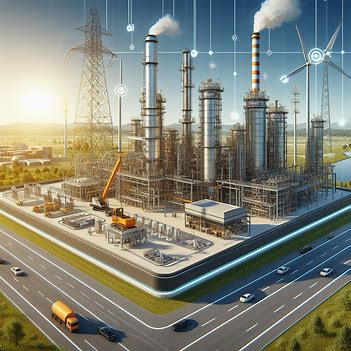Diseño de un reactor y fotobiorreactor para obtener biocombustible de microalgas
DOI:
https://doi.org/10.56124/sapientiae.v7i13.0009Keywords:
Microalgae, Biooil, Photobioreactor, High Pressure ReactorAbstract
Given the problems posed by global warming due to greenhouse gases and a very near future in which the world's main oil reserves are depleted, the use of renewable and more environmentally friendly energies becomes essential. With the different technological advances that we currently have, it is possible to explore new challenges in terms of the production of renewable energy, which is why the use of microalgae as biomass for the production of bio-oil has been considered, considering that microalgae develop with consumption. of carbon dioxide and certain components of wastewater, which would imply an improvement in the environmental conditions of our environment. During the development of the study, the microalgae were filtered to obtain a wet concentrate of microalgae, to be used as raw material. In the first test it was placed in a high pressure reactor, subjected to a temperature of 300 degrees at 100 bar, obtaining bio carbon, combustion gas and some organic compounds dissolved in water. In the second test, it was subjected to a pressure of 200 bar at 350 degrees Celsius and fuel gas, organic compounds dissolved in water and oil were obtained. It is evident that the increase in pressure has an impact on the quality of the products. As pressure increases, cellulose depolymerizes and water turns into cartridges, giving up its hydrogen molecule, which then polymerizes into alkene compounds to form bio-oil. When water enters a supercritical condition that corresponds to 221 bar and 374 degrees Celsius, it reaches its maximum solvency limit and the greatest amount of transformation of organic matter into bio-oil.
Downloads
References
Bercaw, J. E., Durrell, A. C., Gray, H. B., Green, J. C., Hazari, N., Labinger, J. A., & Winkler, J. R. (2010). Electronic structures of PdII dimers. Inorganic chemistry, 49(4), 1801-1810. https://pubs.acs.org/doi/abs/10.1021/ic902189g
Bermúdez, L. M. S., Landínez, D. M. R., Sáenz, E. R. S., Carvajal, O. M. S., Sierra, C. A. Á., Parra, J. M. T., ... & Silva, R. D. G. (2011). Efecto del hierro en el crecimiento y acumulación de lípidos en la microalga colombiana Chlorella Vulgaris LAUN 0019. ITECKNE: Innovación e Investigación en Ingeniería, 8(1), 15-22. https://dialnet.unirioja.es/servlet/articulo?codigo=4991541
Chicaiza, C. (2017). Diseño y construcción de un prototipo de fotobiorreactor discontinuo a escala laboratorio para la producción de biomasa algal. Escuela Superior Politécnica de Chimborazo. Facultad de Ciencias, Escuela de ciencias químicas.
Díaz-Arias, A. A. (2022). Biogás: una fuente de energía para las generaciones futuras en la era post-petrolera. Agroindustria, Sociedad y Ambiente, 2(19), 104-122. https://revistas.uclave.org/index.php/asa/article/view/4222
Flores Paltán, F. G., & Velín Sagbay, J. P. (2014). Diseño y construcción de un BIORREACTOR anaerobio en fase líquida para tratar aguas residuales de curtiembre. Tesis de grado. [Escuela Superior Politécnica de Chimborazo, Ecuador]. Repositorio institucional de la U Espoch. http://dspace.espoch.edu.ec/handle/123456789/3500
Frine, H. (2021). Diseño de un prototipo de fotobiorreactor para el cultivo de algas con dióxido de carbono que servirá como materia prima para la generación de biocombustible en la ciudad de Manta”. Ecuador. Universidad Laica “Eloy Alfaro” de Manabí.
Garzón-Oechsle, A., Johanson, E., & Martínez, V. (2023). Los manteños de Bola de Oro y su resiliencia al cambio climático: reconstrucción cronológica de modificaciones agrícolas a través de modelado de edad-profundidad y análisis de abundancia de carbón. STRATA, 1(2), e11-e11. https://revistas.patrimoniocultural.gob.ec/ojs/index.php/Strata/index
Gonzales, A. (2015). ¿Qué son las microalgas interés y uso? Pág. 4. octubre. URL: https://www.cajamar.es/storage/documents/microalgas-1444391623-ca345.pdf.
Jiménez, D. y Montalván, P. (2018). Diseño y prueba piloto de un reactor tubular cerrado de microalgas de alta tasa para el tratamiento de aguas residuales y recuperación de recursos. Cuenca: Universidad de Cuenca.
Jiménez, M., & Castillo, A. (2021). Biomasa microalgal con alto potencial para la producción de biocombustibles. Scientia Agropecuaria, 12 (2), 265–282. http://www.scielo.org.pe/scielo.php?pid=S2077-99172021000200265&script=sci_arttext&tlng=en
Remon, J. (2019). Producción de biocombustibles y productos de valor añadido mediante licuefacción hidrotérmica de pericarpios de almendras: Instituto de Carboquímica (ICB). Consejo Superior de Investigaciones Científicas (CSIC). Zaragoza España
Rubio-Fernández, D., & Alejandro Hernández, G. (2016). Evaluación de las incidencias de salinidad y pH sobre la biomasa, productividad y acumulación de lípidos en cultivos de Chlorella vulgaris en un fotobiorreactor de placa plana. Iteckne, 13(1), 44-56. http://www.scielo.org.co/scielo.php?pid=S1692-17982016000100006&script=sci_arttext
Rubio Fernández, D., Sierra Herrera, J. A., Ruiz Fonseca, S., & Sandoval Herrera, J. A. (2022). Design of a Bench-Scale Airlift Photobioreactor. https://alejandria.poligran.edu.co/handle/10823/6256
Saldaña, A. G., Mendez, V. A., & Alejandro, H. M. (2023). La dialéctica de los cambios ambientales El antagonismo del cambio climático. Ciencia Latina Revista Científica Multidisciplinar, 7(1), 2656-2670. https://ciencialatina.org/index.php/cienciala/article/view/4614
Usi, E. (2008). ¿Cuándo se acabará el petróleo? https://www.dw.com/es/cu%C3%A1ndo-se-acabar%C3%A1-el-petr%C3%B3leo/a-3036853.
Yoandy, G. (2019). Diseño y simulación de un fotobiorreactor para el cultivo de la microalga Chlorella Vulgaris. Ingeniería Mecánica, vol. 22, núm. 3, pp. 169-177,
Zúñiga, P. I. V., Cedeño, R. J. C., & Palacios, I. A. M. (2023). Metodología de la investigación científica: guía práctica. Ciencia Latina Revista Científica Multidisciplinar, 7(4), 9723-9762. https://www.ciencialatina.org/index.php/cienciala/article/view/7658

Published
How to Cite
Issue
Section
License
Copyright (c) 2024 Revista Científica Multidisciplinaria SAPIENTIAE. ISSN: 2600-6030.

This work is licensed under a Creative Commons Attribution-NonCommercial-ShareAlike 4.0 International License.

2.jpg)


















